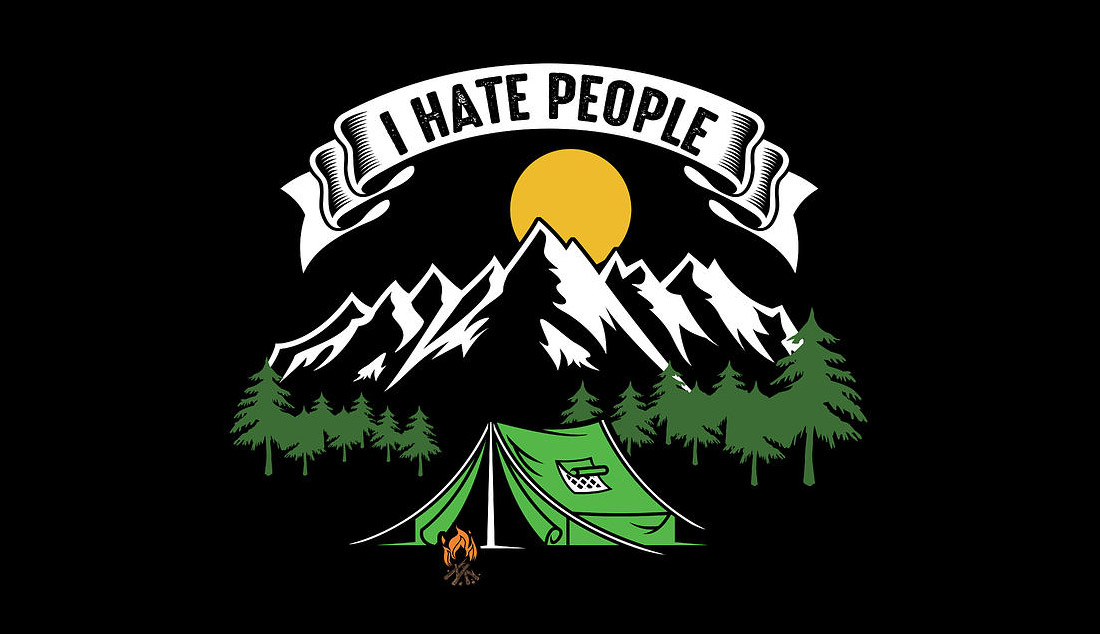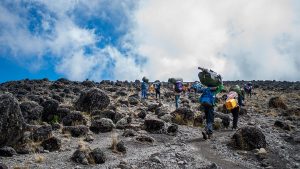Many travelers, go to Tanzania to climb Kilimanjaro. In their head, they picture a remote trek on the world’s tallest freestanding mountain. At the very least, they expect some peace and quiet. But instead, they find the mountain is teaming with other trekkers, porters, guides, and trash. This can make your climb a bit disappointing. So how do you climb Kilimanjaro without the crowds?
Why is the mountain so crowded?
Reason one, it is a walkable mountain. Kilimanjaro requires no mountaineering skills to climb to its 19,341-foot summit. Therefore any reasonably fit person, with perseverance, can make its summit. As long as their body can adapt to the extreme elevation gain.
Secondly, Kilimanjaro is the easiest of the Seven Summit to summit. This is appealing to many people. Before COVID, the Tanzania National Parks recorded on average about 50,000 climbers a year attempting Kilimanjaro. That is about 50 times more than those attempting either Everest or Denali in Alaska.
Thirdly, with all the people on the mountain comes all the porters to carry each group’s equipment, water, and food. For example, a group of 10 trekkers can have a mountain crew of 36 people. That would be one guide, three assistant guides, two cooks, and 30 porters.
Rules and Regulations
Managing the impact of so many people on the mountain is a serious challenge. The Park has implemented several rules and regulations to help this. Hikers must stay on predetermined routes and sleep at designated camps. Each camp now has a weigh station where guides and porters check-in. These weigh-ins protect porters from carrying too heavy of load (no more than 33 pounds) and also protect the mountain from litter. Groups must weigh their trash to ensure what goes up Mount Kilimanjaro, also comes back down.
Human waste is also an ongoing problem. Recently, the Park has installed permanent composting toilets at each campsite. These are for the trekkers if they have not rented a private toilet tent. There are also older, moveable long-drop toilets that are for the porters.
Perhaps it is the new regulations or that far fewer people are currently going to Kilimanjaro right now. Or perhaps it is the results of a massive Kilimanjaro cleanup by porters that occurred toward the end of 2020. Either way now is a good time to climb Kilimanjaro since it is quite clean and there are far fewer people going there due to the pandemic.
Choosing your route
Choosing the right route is vital for crowd avoidance. On Kilimanjaro, hikers can choose from several routes. Some of these routes join with other routes as they near the summit. Two-thirds of trekkers opt for the Marangu or Machame routes. These routes are so popular they’re nicknamed the Coca-Cola and Whiskey routes.
If you’d like a route with fewer people, then the Northern Circuit route is one for you. It is the only route that circles around the north side of Kilimanjaro and summits from the East. Less than 1% of trekkers book their climb on the Northern Circuit.
The Lemosho route is also a good route since only about 9% of all trekkers choose this route. It starts with the Northern Circuit and departs near Lava Tower. However, it then joins the Machame route and becomes a bit more crowded the rest of the way.
The Rongai route is also a good choice for those looking for a more remote climb with fewer people. The Rongai Route is the easiest and most gradual approach to the summit but well worth the climb.
Private climb
Another way to avoid the crowds is to book a private climb. On a private climb, you can go on any date and route, Most group climbs start on the weekend. This means most people climb at the same time. If you choose a private climb, let’s say on a Tuesday, then the group climbers will be ahead or behind you so you’ll have fewer people at the camps.
Additionally, areas where the crowd bottlenecks, like the Barranco Wall, can be climbed before the crowds go up or after they have already ascended.
Weather
A more extreme method to climb Kilimanjaro without other people—and one we only recommend for seasoned hikers—is to climb during the rainy season. Most of the time the rain doesn’t arrive until the afternoon, once you are at camp. The rainy seasons are November and Mid-March through the end of May. Keep in mind that the roads can become impassable if it has rained too much, so you won’t be able to get to the trailheads. If you do, we recommend the Northern Circuit or the Marangu routes. Ther Northern side of the mountain receives less rainfall. The Marangu route has huts to sleep in so you don’t have to sleep on the wet ground.
In Conclusion
If climbing Kilimanjaro is something you want to do, but don’t like the crowds your options are choosing a less-traveled route like the Lemosho or Northern Circuit, booking a private climb, and starting on a weekday. Furthermore, we suggest climbing in 2022. Most people are not traveling as much as they were before the pandemic, but we are sure they will be back. Climbing Kilimanjaro is definitely an adventure of a lifetime and one that every outdoor enthusiast should add to their bucket list.




